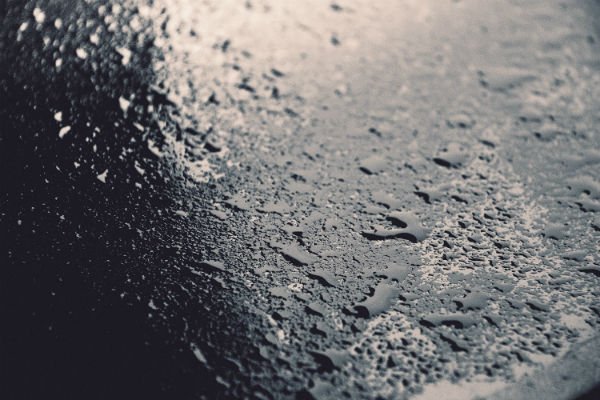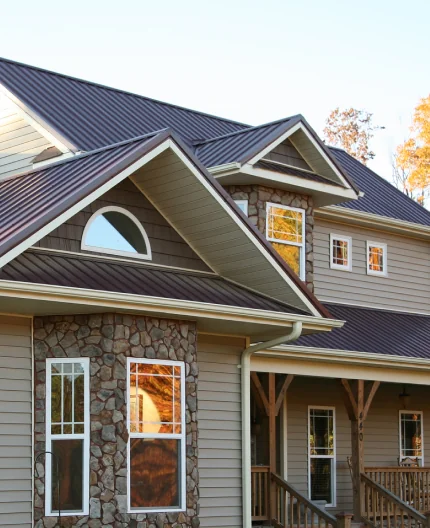Condensation on Walls: Why Are Walls in My Home Wet?
Published on Wednesday July 17, 2024Condensation on certain walls of your home at specific times is totally normal. When you’ve finished a hot bath or shower, for example, it’s normal to notice some droplets or damp patches on your bathroom walls.
However, when condensation or dampness lingers or shows up on walls that typically have water nowhere near them, there may be a problem. Let’s look at how to spot abnormally wet walls, what causes them, and what you can do about them.

Signs of Wet Walls
If you notice that the walls of your home are frequently wet, sweating, damp, or slick, it could be a sign of a moisture issue that needs attention. Some of the most common signs you may notice include:
- Peeling paint or wallpaper
- Watermarks or staining
- Wet spots on the wall or ceiling after rain
- Water running down indoor walls
- Walls that feel damp to the touch
- Visible mold
- A musty, stale odor
What Causes Wet Walls?
Condensation on walls in your home is most often caused by trapped moisture or water seeping in, which can lead to condensation, leaks, and poor drainage. These issues can cause anything from a minor leak that’s easily patched up to major (and expensive) water damage to your home. Let’s look at the most common culprits of unwanted dampness on your walls.

Condensation
Condensation occurs when hot, moist air hits cold, dry air. This causes water droplets to form on cold surfaces like walls. You’ll find this on your bathroom walls after a hot shower, and it’s totally normal–as long as it goes away after a few minutes.
Anywhere steam is produced in your house, including the kitchen, is likely to have condensation sometimes. However, it can be found in any room, including your bedroom or living room. A large temperature difference between the air outside and the air inside your home produces condensation on surfaces like walls and windows inside your house. This type of condensation encourages mold growth and drywall stains.
Fortunately, there are easy solutions to condensation issues and interior wall sweating. Before spending money on a pro, try putting dehumidifiers in the rooms. If that doesn’t solve the problem, your roof may need ventilation improvements.
Plumbing Problems and Leaks
Plumbing problems, including leaky fixtures, dripping faucets, or seeping sinks, are also common causes of wet walls. Water-wielding appliances like washing machines and dishwashers can also add unwanted moisture to your walls (and floors). Your home’s complex plumbing system is highly susceptible to wear and tear due to constant use, leading to potential leaks anywhere in your home. These leaks and drips can cause costly structural damage or unhealthy mold growth if left unattended.
If you notice any signs that something in your plumbing system isn’t working correctly, call a plumber immediately to nip the problem in the bud. Regular inspections and maintenance of plumbing systems can help catch potential leaks before they become major headaches.
Outside Sources of Water Inside Your Walls
Outside of your plumbing system, water can enter your home in many ways. Skylights, vents, and chimneys can bring water inside, leading to damp walls. You should look out for cracked masonry and deteriorating flashing around windows and doors, as they’re potential sources of water intrusion.
If you notice damp patches or spots on walls or ceilings after a rainstorm, you probably have a leak. Call a roofing professional as soon as possible, as these damp walls can cause immediate and long-term damage to your home’s integrity.
Ice Dams
Inadequate roof insulation, ventilation, or gutter systems can lead to the formation of ice dams in the winter, especially after a heavy snowfall.
Snow can accumulate on your roof. But without sufficient insulation or ventilation in your attic, it melts from the heat inside your house. The frigid outdoor temperatures swiftly transform the melted water into ice once it reaches the gutters, resulting in an obstruction commonly referred to as an “ice dam.” Gravity then forces the ice dam downward, freezing your gutters until they detach from your home.
Sometimes, though, ice dams back up onto the roof, seeping through even the tiniest openings. This brings moisture into your walls.
To avoid ice dams altogether, check your home’s insulation, ventilation, and gutter systems before each winter.
Rising Damp
Moisture can creep upward through porous materials via capillary action, akin to how liquid “crawls” up the edge of a paper towel. Your walls, constructed with materials like plaster and drywall, are porous enough to draw moisture from the ground.
This phenomenon, known as rising damp, leaves behind telltale mineral deposits and distinctive “tide marks” at the base of your walls over time. Most buildings have a barrier against rising damp, called a damp proof course (DPC). However, even this protection can wear away over time.
The only way to fix rising damp is to remove any wallpaper, plaster, or other materials down to the wall’s brick or substrate, replaster the wall, and add fresh DPC. We highly recommend having a professional do this, especially if the damage is widespread.
Penetrating Damp
Unlike rising damp, penetrating damp enters directly from an external source, usually a leak or crack in your home’s foundation. In regions like the mid-Atlantic, the extensive use of porous block and block wall seams make basements particularly susceptible to penetrating damp.
If your home lacks adequate drainage, especially in areas with expansive soil, like Virginia, it can lead to bowing, buckling, or cracking of basement walls. These fissures, combined with moist soil around the foundation, serve as prime entry points for moisture. This problem becomes even more pronounced after a heavy downpour.

How to Fix Condensation on Walls
You don’t have to live with water damage. The best way to prevent moisture in your walls is to improve surface water drainage, repair damage, and ventilate the space.
Improve Surface Water Drainage
Thorough surface water drainage is a key part of combating rising and penetrating dampness. By diverting water away from vulnerable areas, you prevent it from reaching surfaces altogether.
If you suspect your house lacks proper drainage, consider redirecting downspouts, adjusting your property’s grading, or installing French drains and a sump pump in your basement.
Repair Damages
Once you’ve improved the water drainage, repair any damaged structures to prevent further damage. You may need to hire a professional mold removal service to fully get rid of unhealthy and dangerous mold caused by long-term leaks and moisture.
Ventilate the Space
Make sure your home has adequate airflow, especially in spaces that see a lot of steam. Install ceiling fans, windows, or dehumidifiers. This allows surfaces to dry thoroughly, preventing future moisture problems.
When Your Roof is the Problem
Spotting and addressing roof issues as soon as you notice leaks will go a long way toward preventing long-term damage. If you notice wet spots on ceilings or walls after rainfall or damp walls following heavy storms, it could indicate that your roof needs attention.
Contact Long Roofing First
Long Roofing is the East Coast’s most trusted name in helping homeowners improve their homes. Our trusted roof replacement specialists will walk you through every step of your new roof process. Contact us today to get a free estimate and say goodbye to roof leaks!
Interested in Long Home Products?
See our special offers now.
*Excludes labor. Subject to credit approval.
**Excludes labor. Subject to credit approval.
One-day installs contingent upon municipal rules and regulations.
By submitting a form, I authorize Long Home Products to contact me with information abouts its products and services via mail, email, phone and/or text at the contact information provided, even if I am on the national do not call list. Long Home Products may use automated telephone technology to initiate calls to its customers. Calls and in person estimates may be recorded for quality and training purposes.








